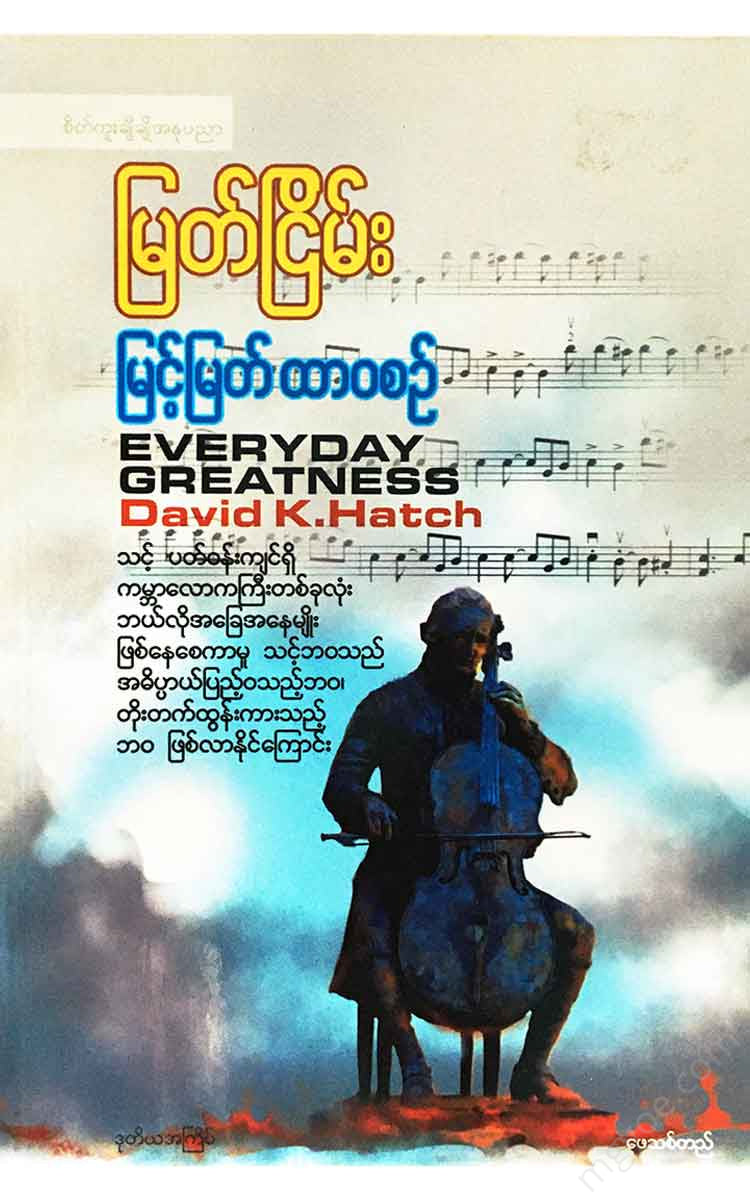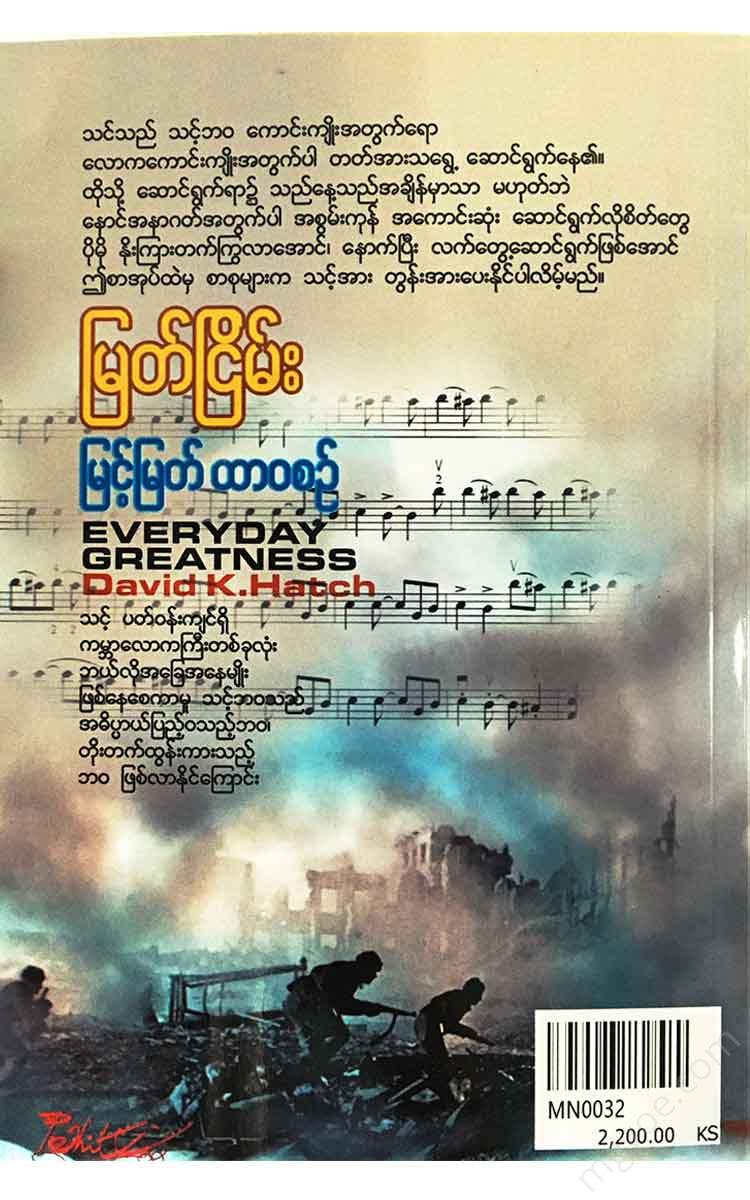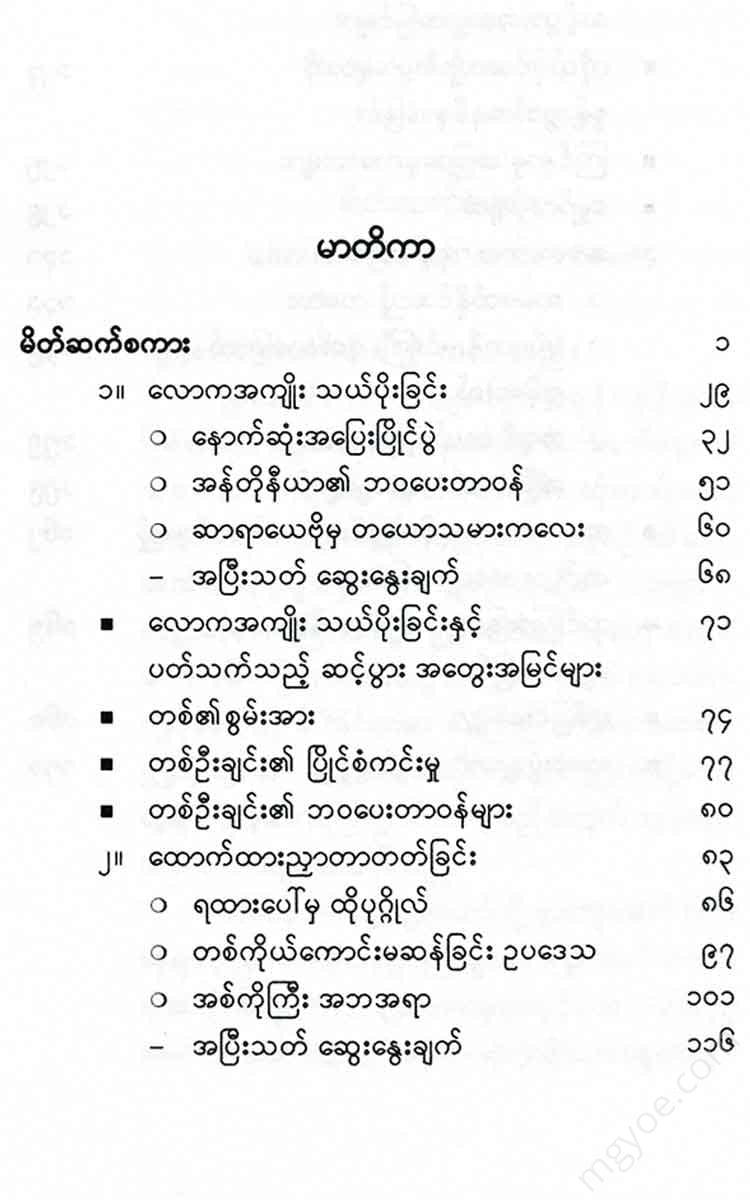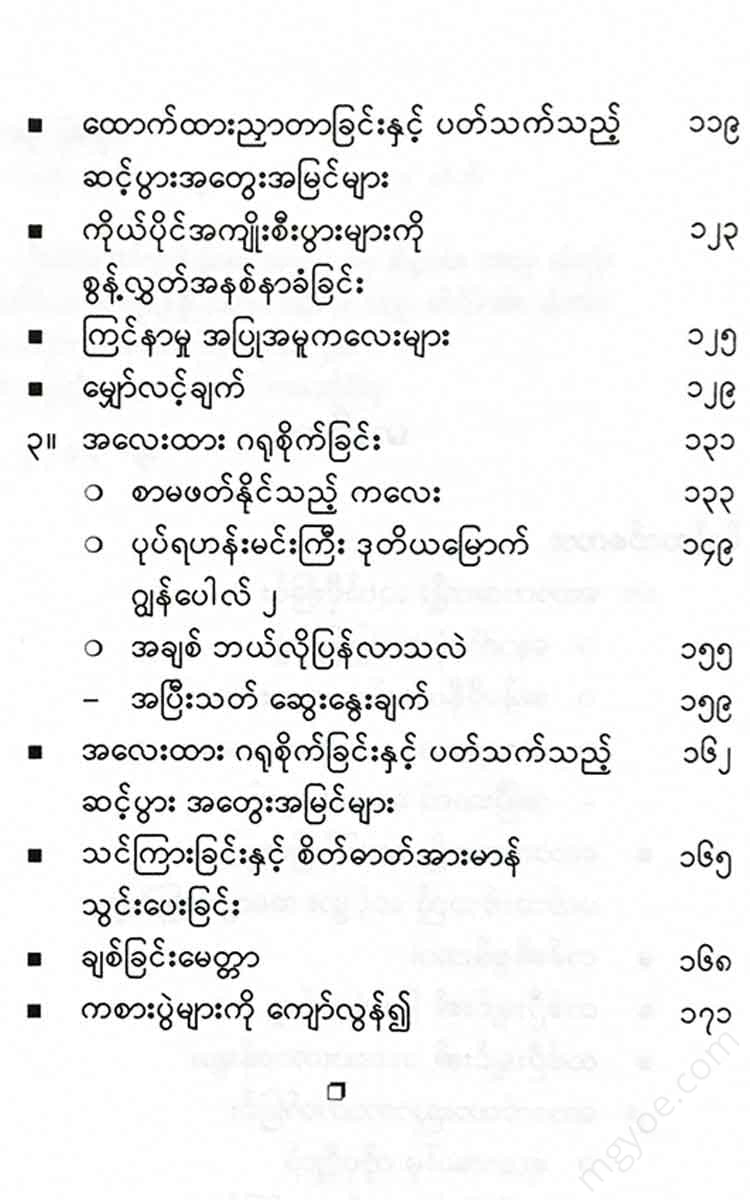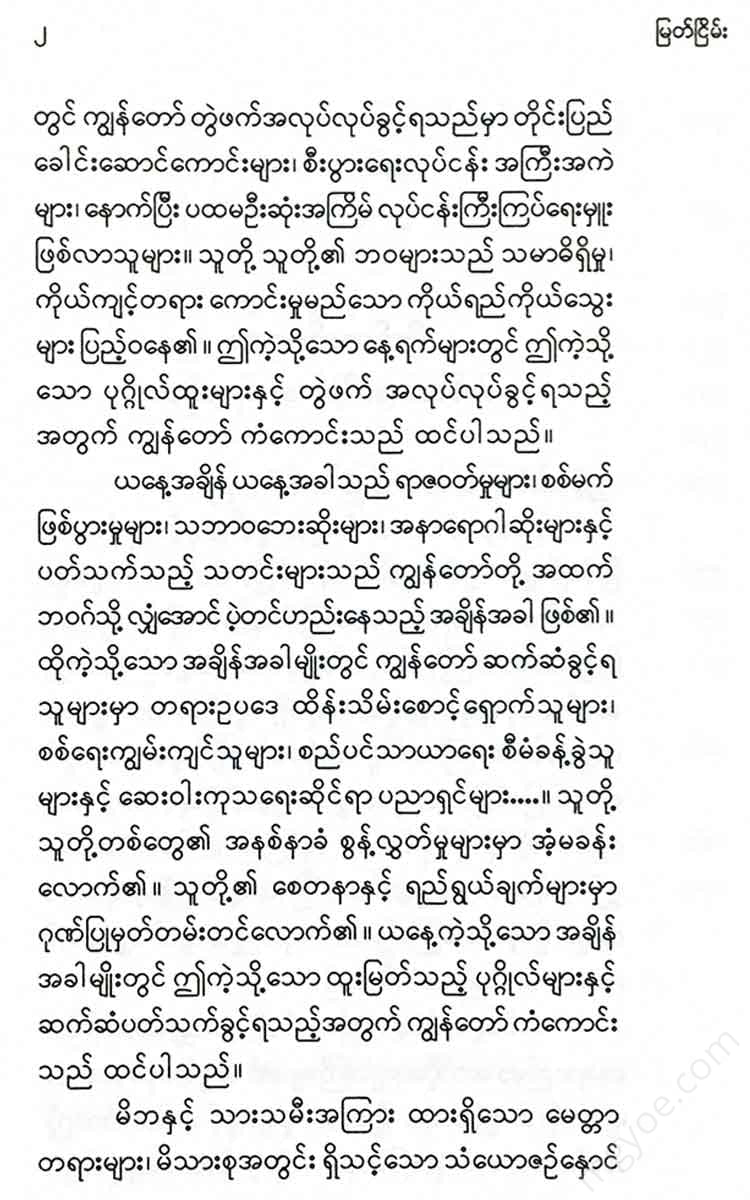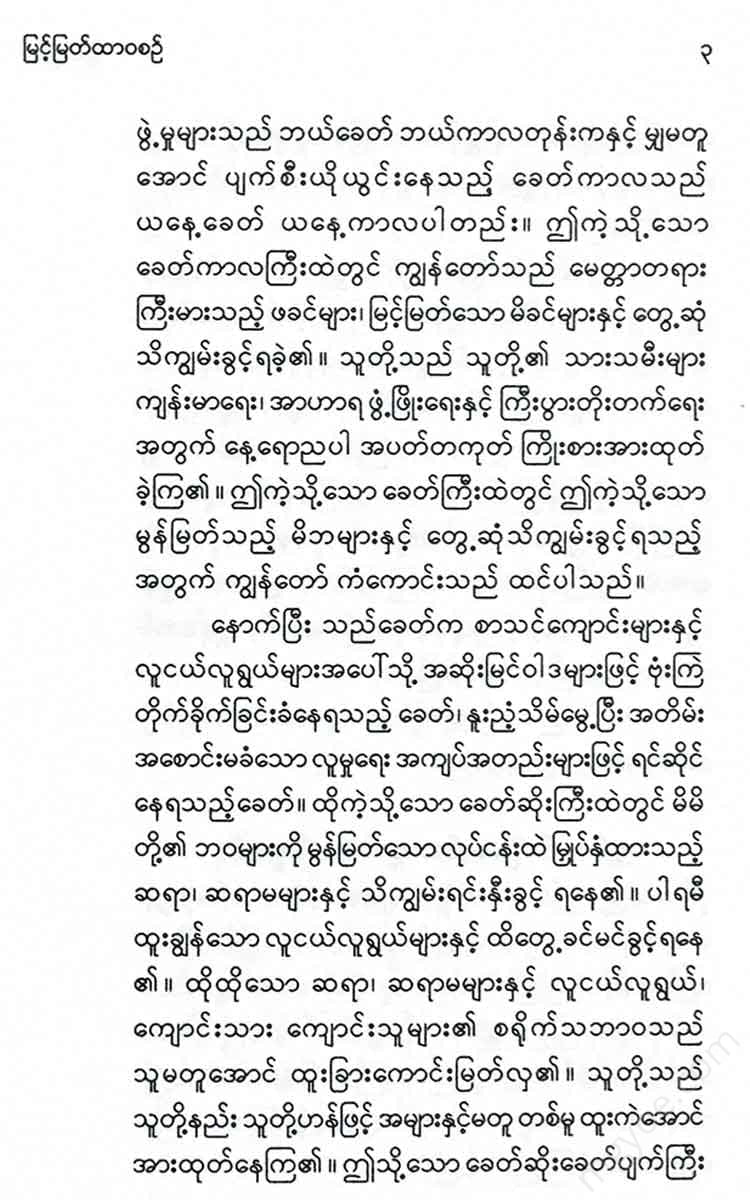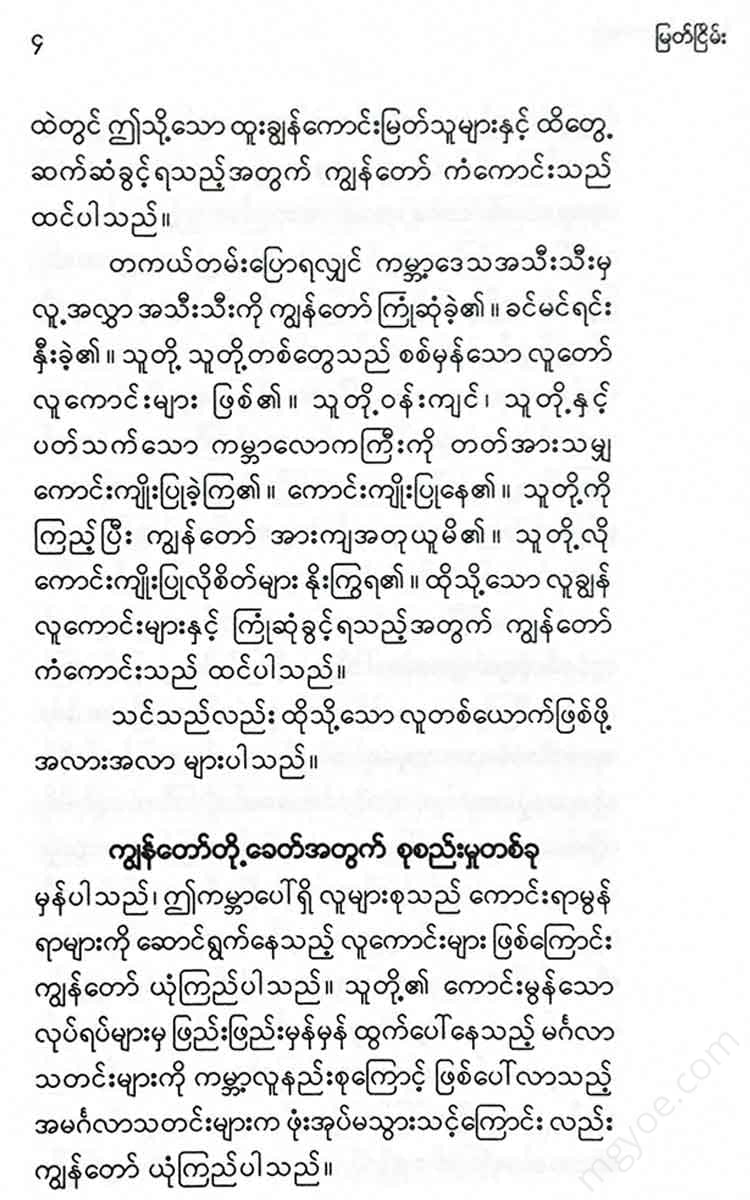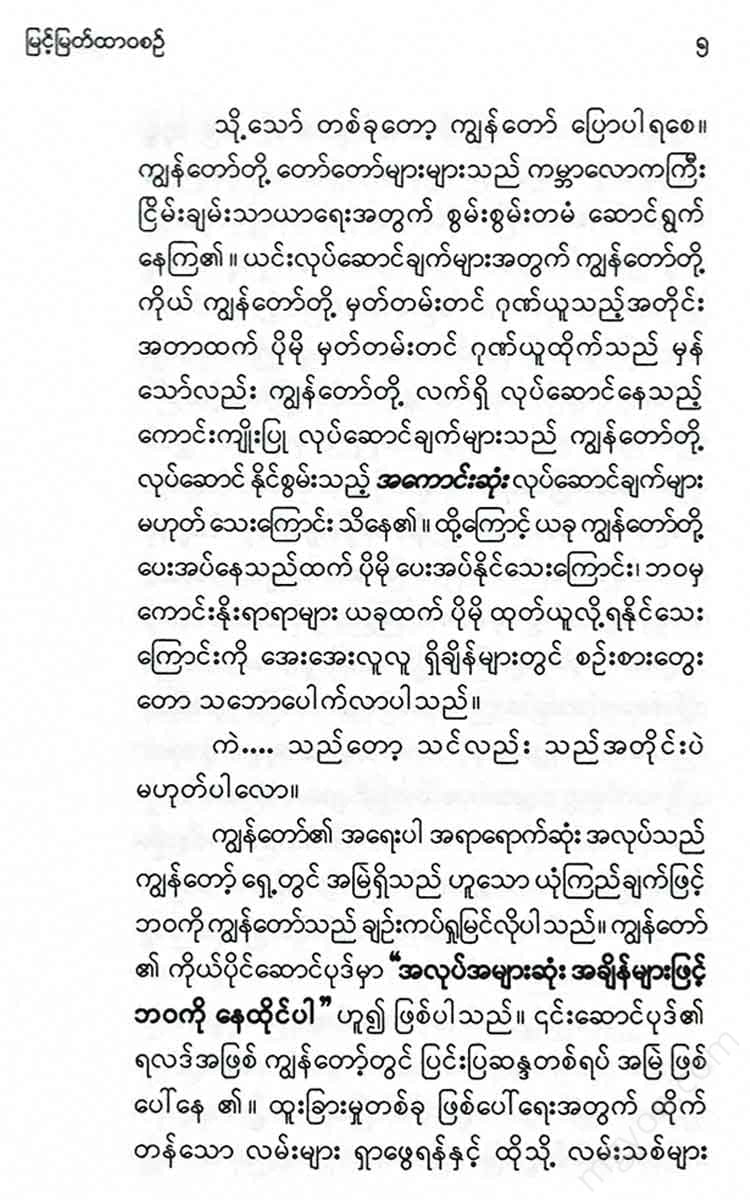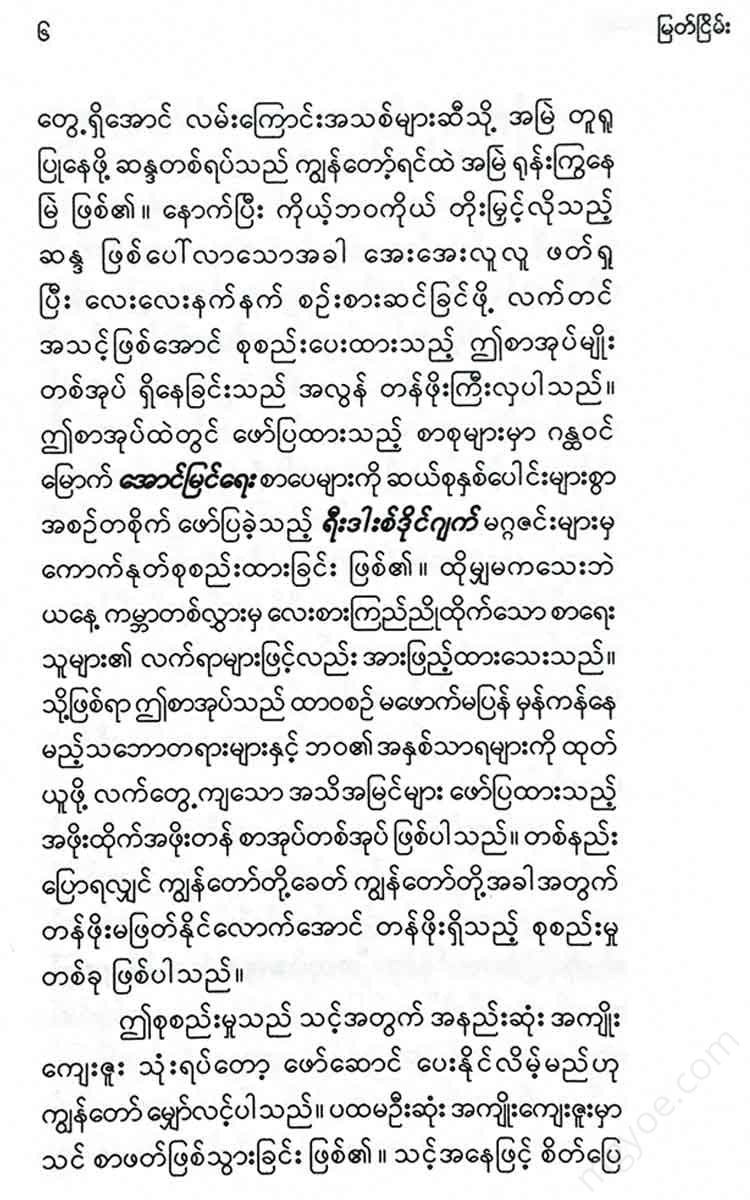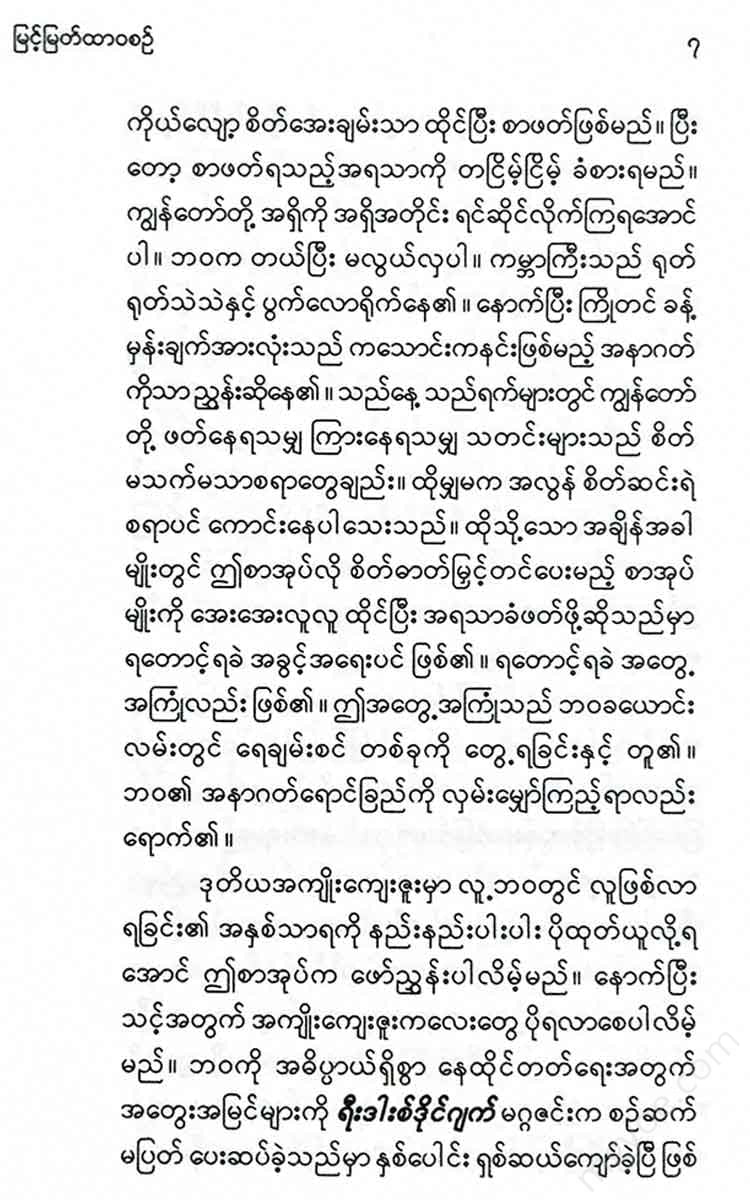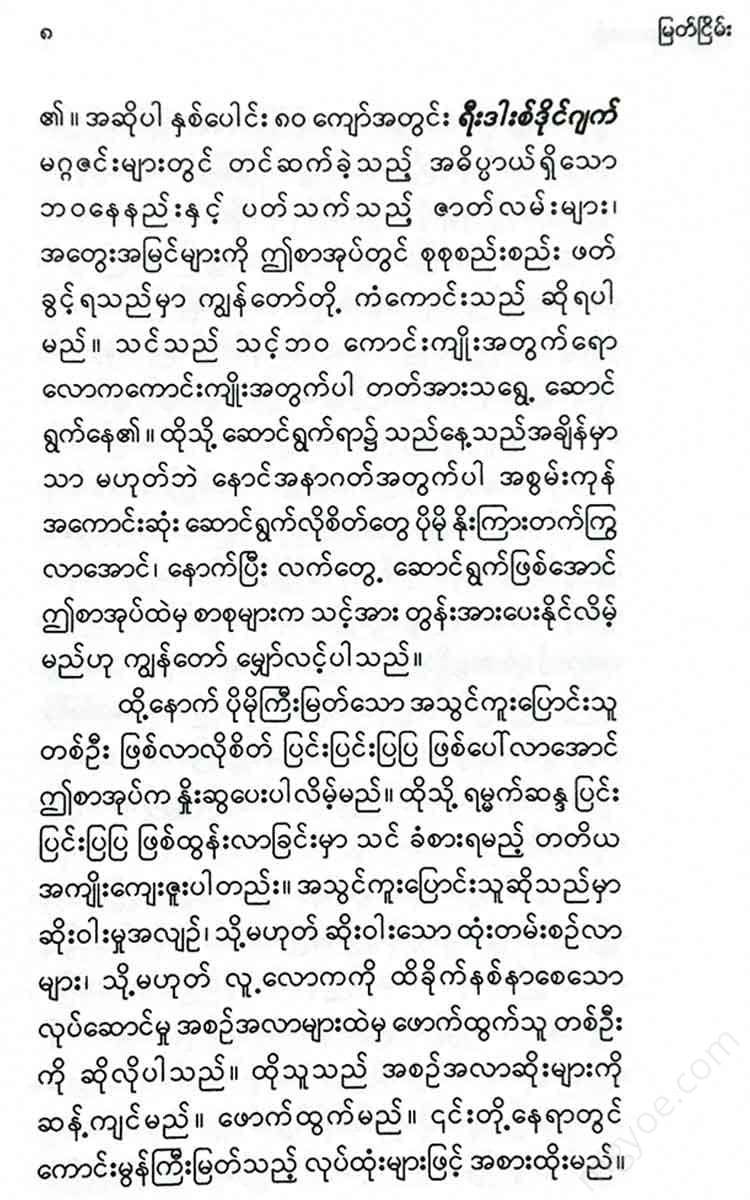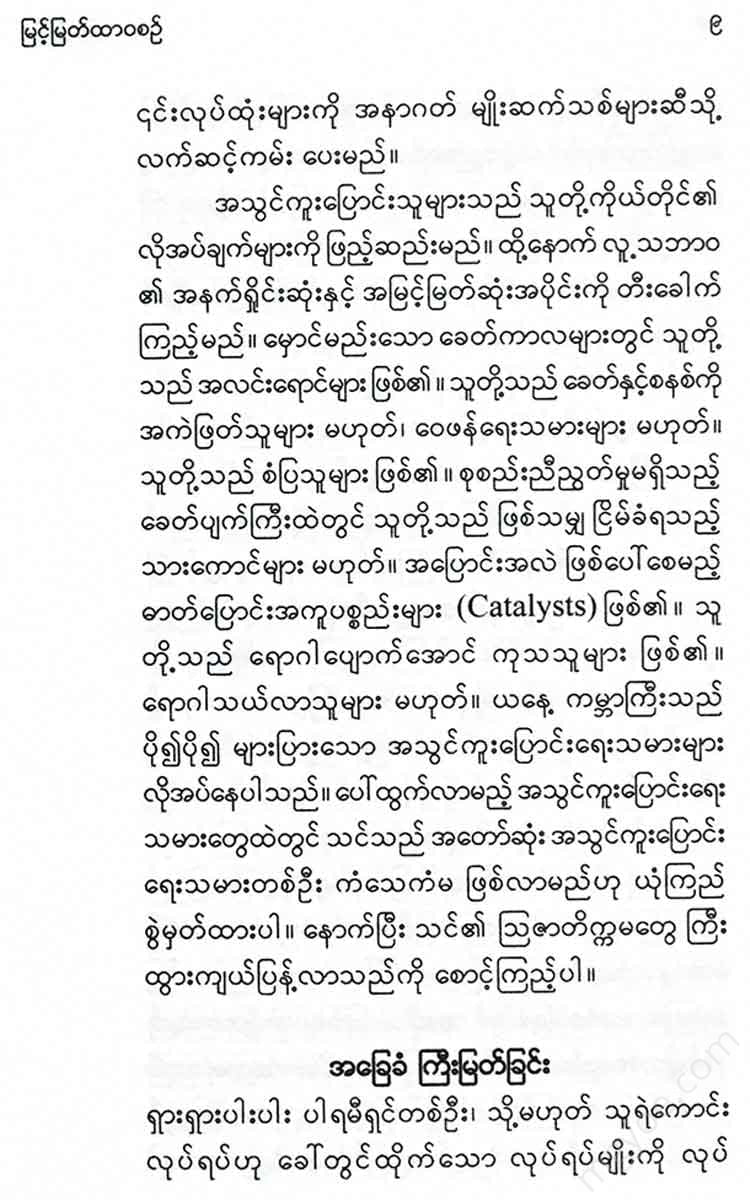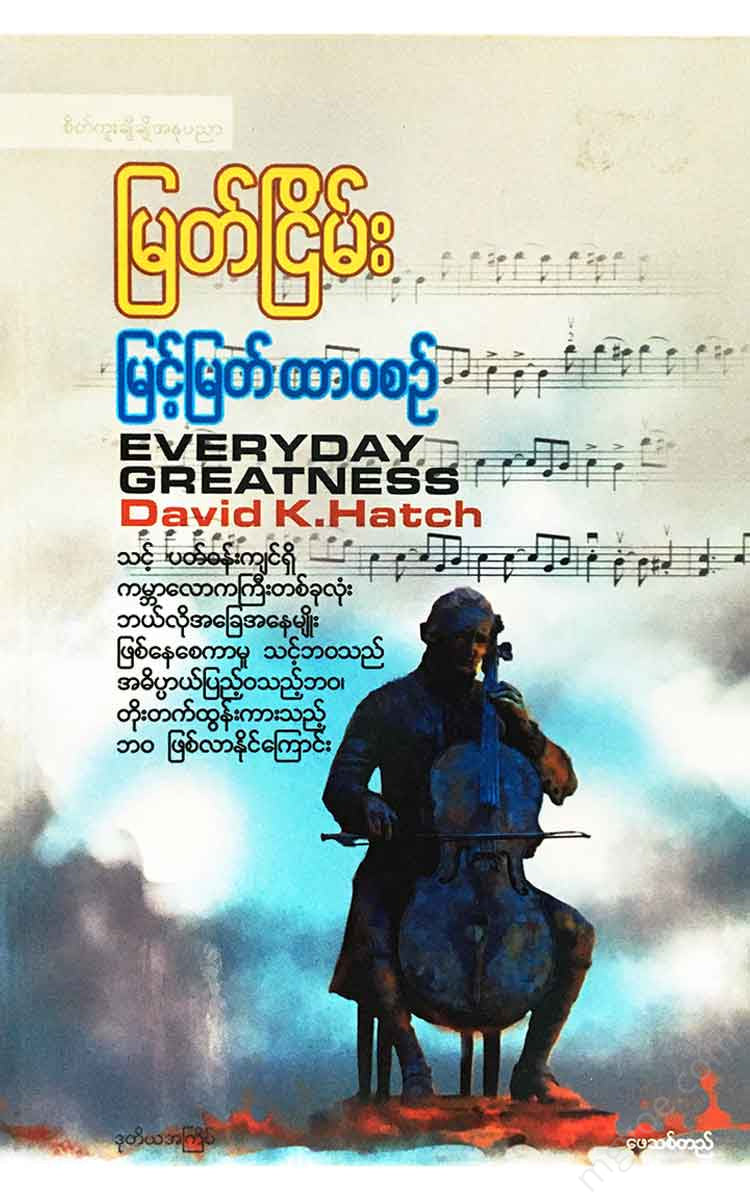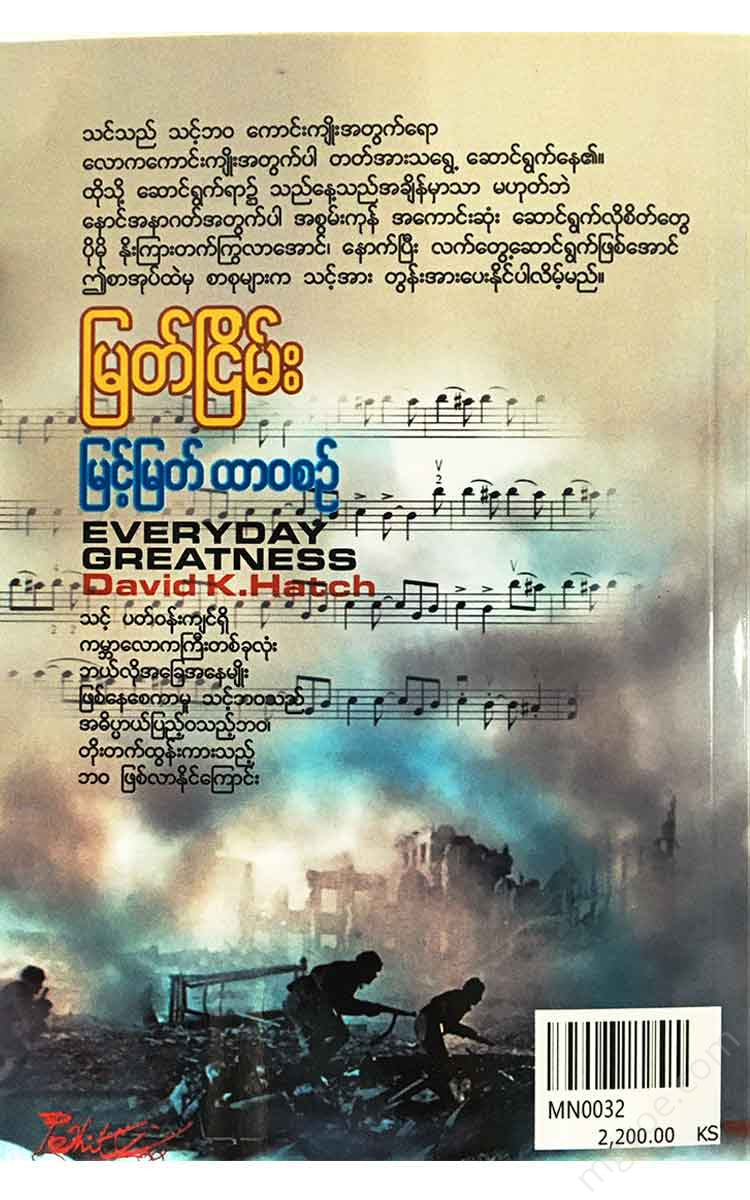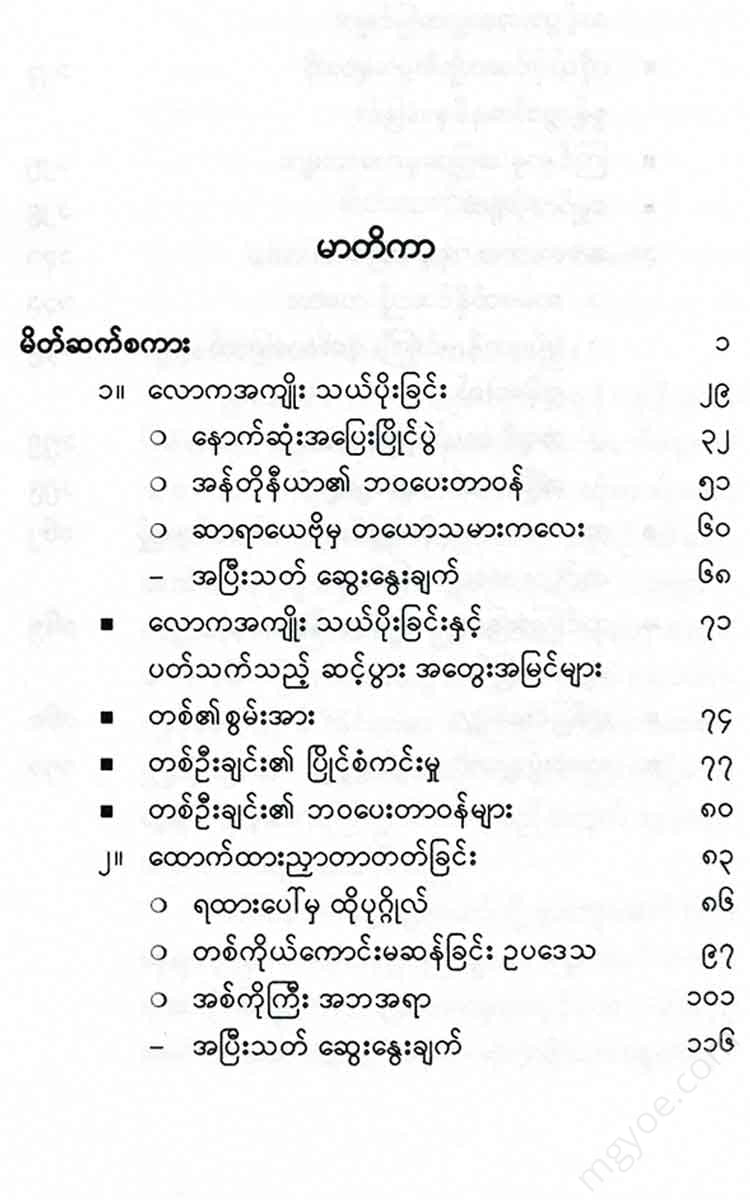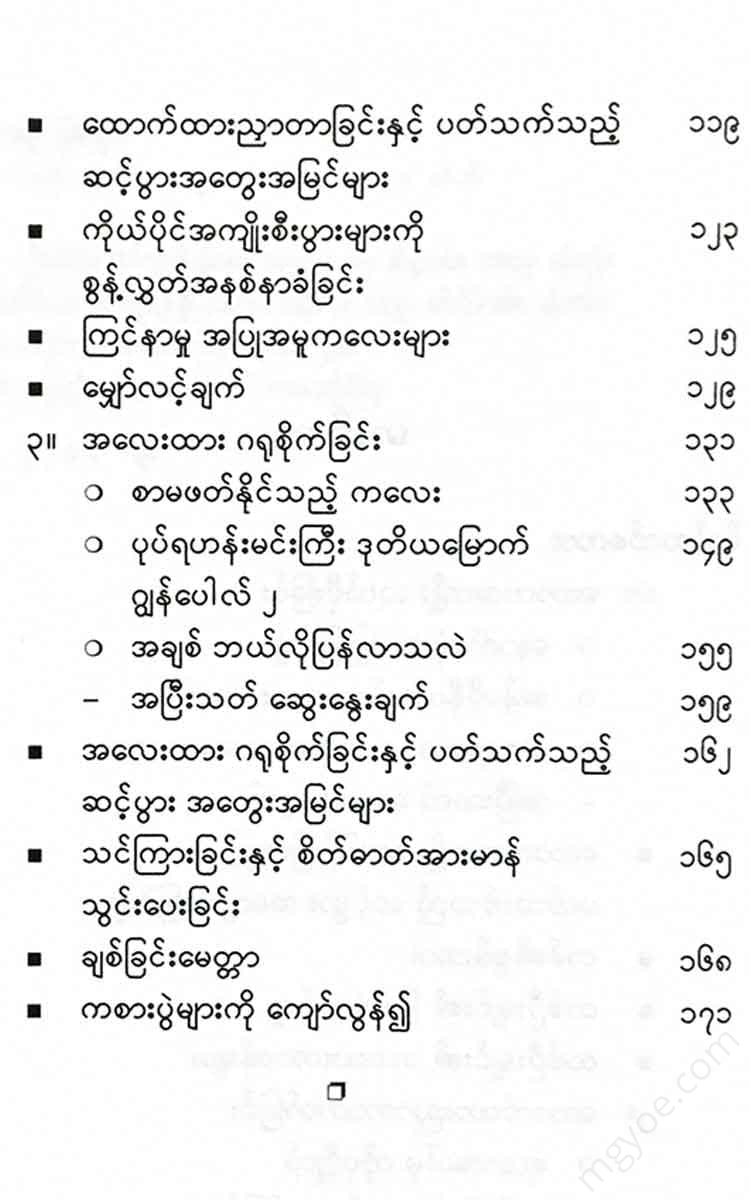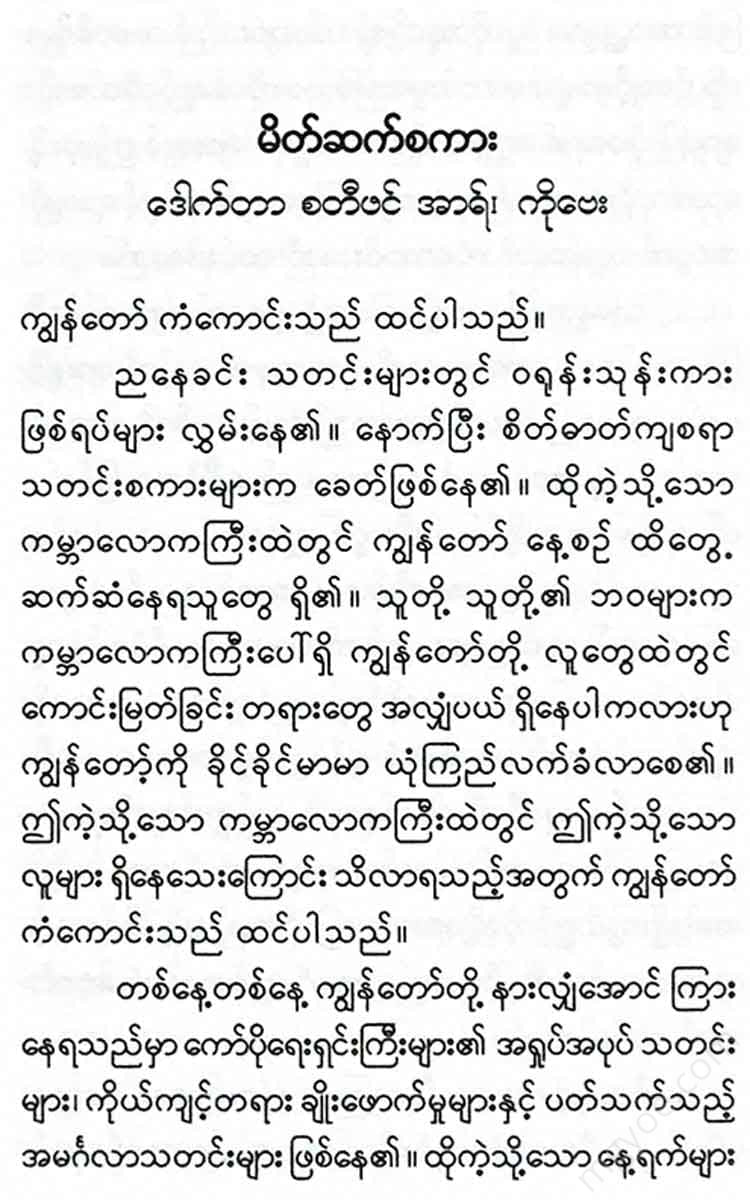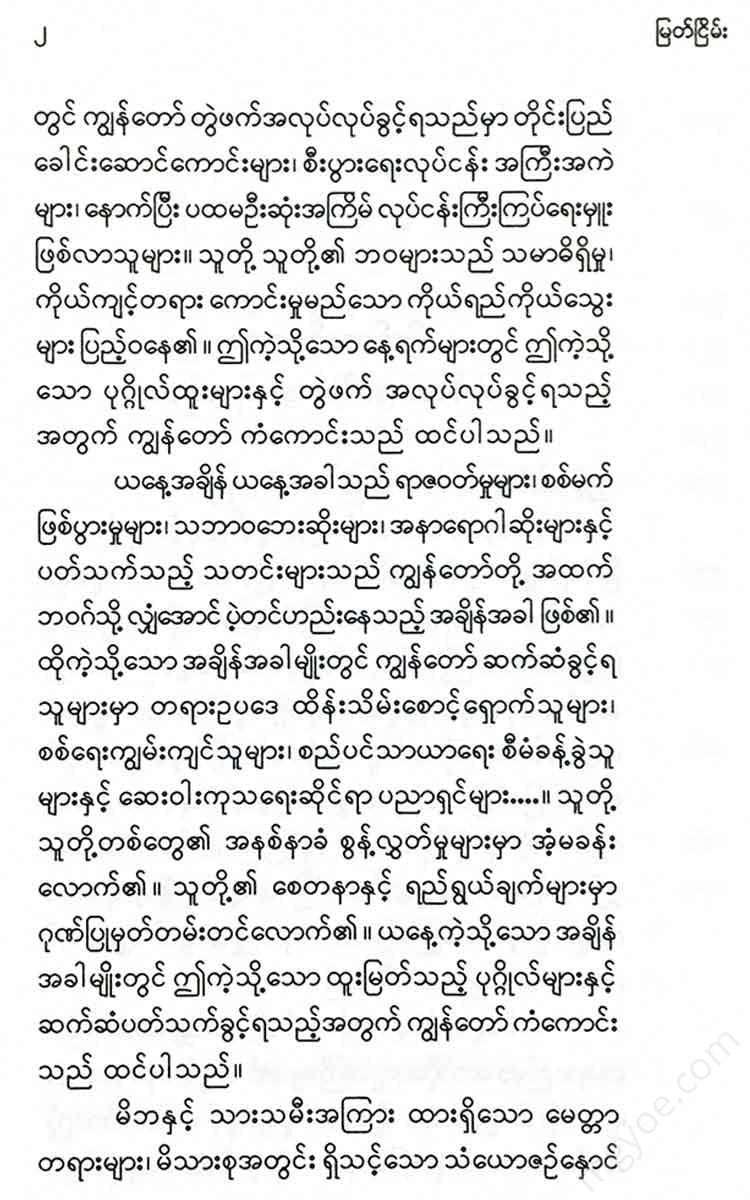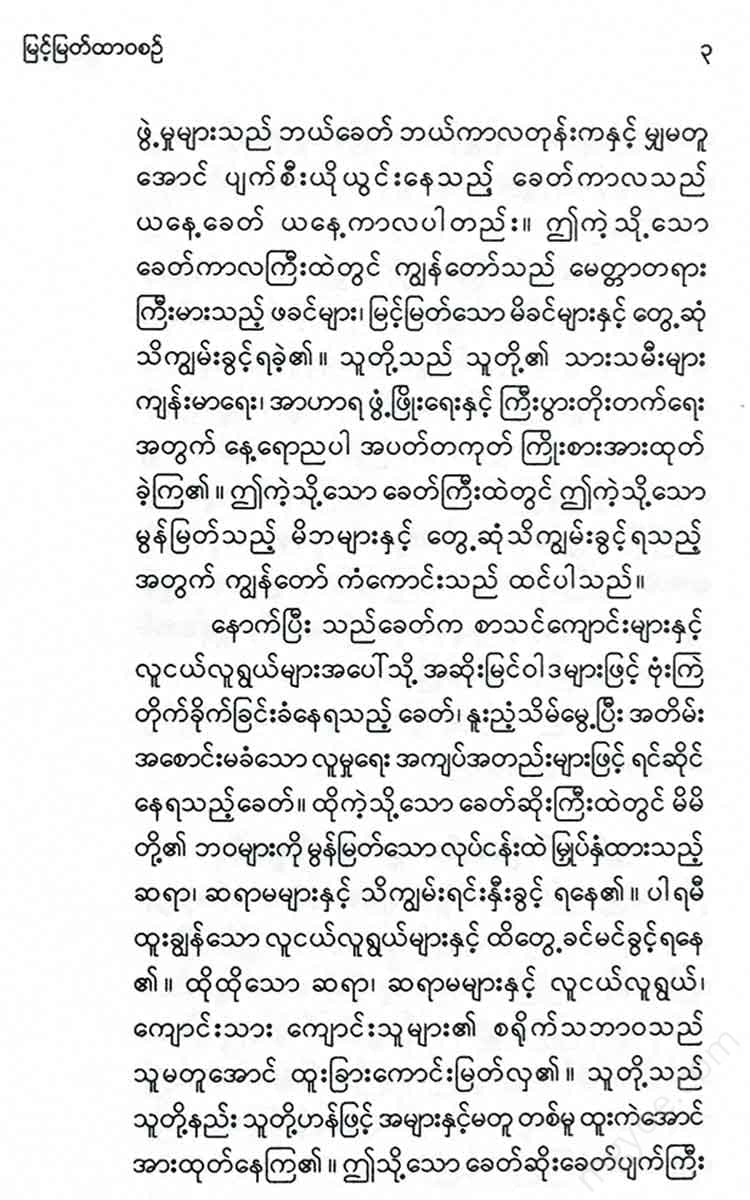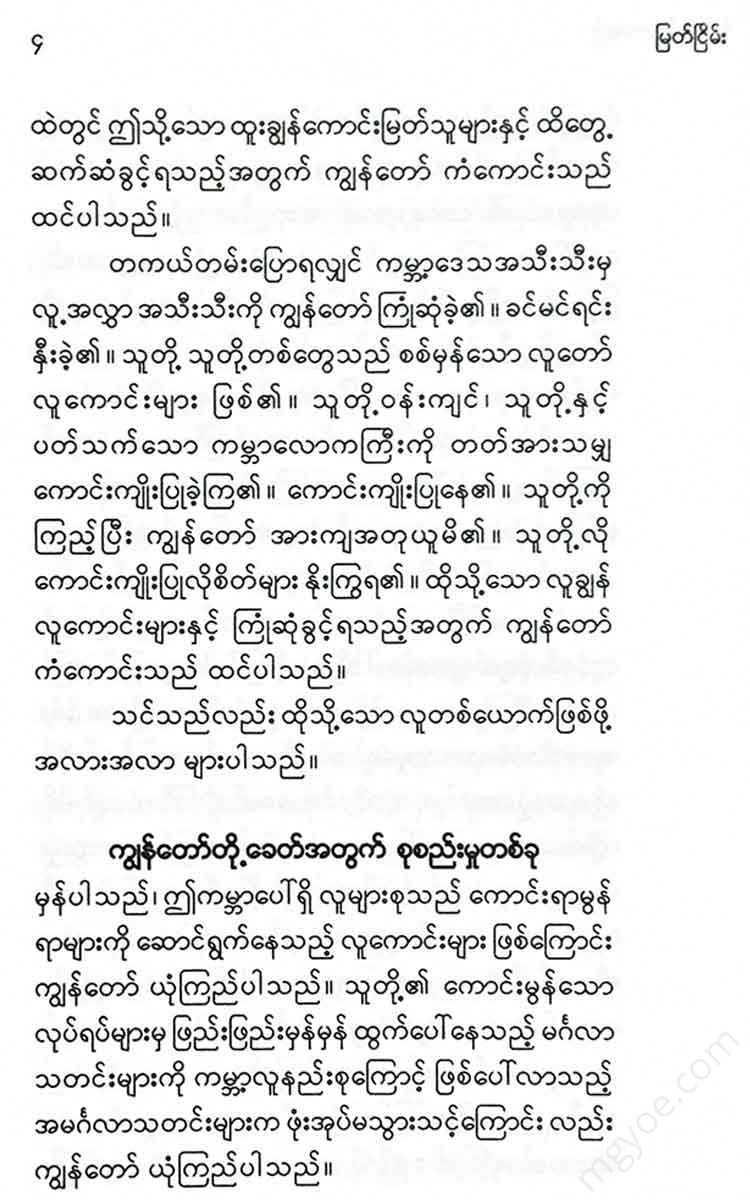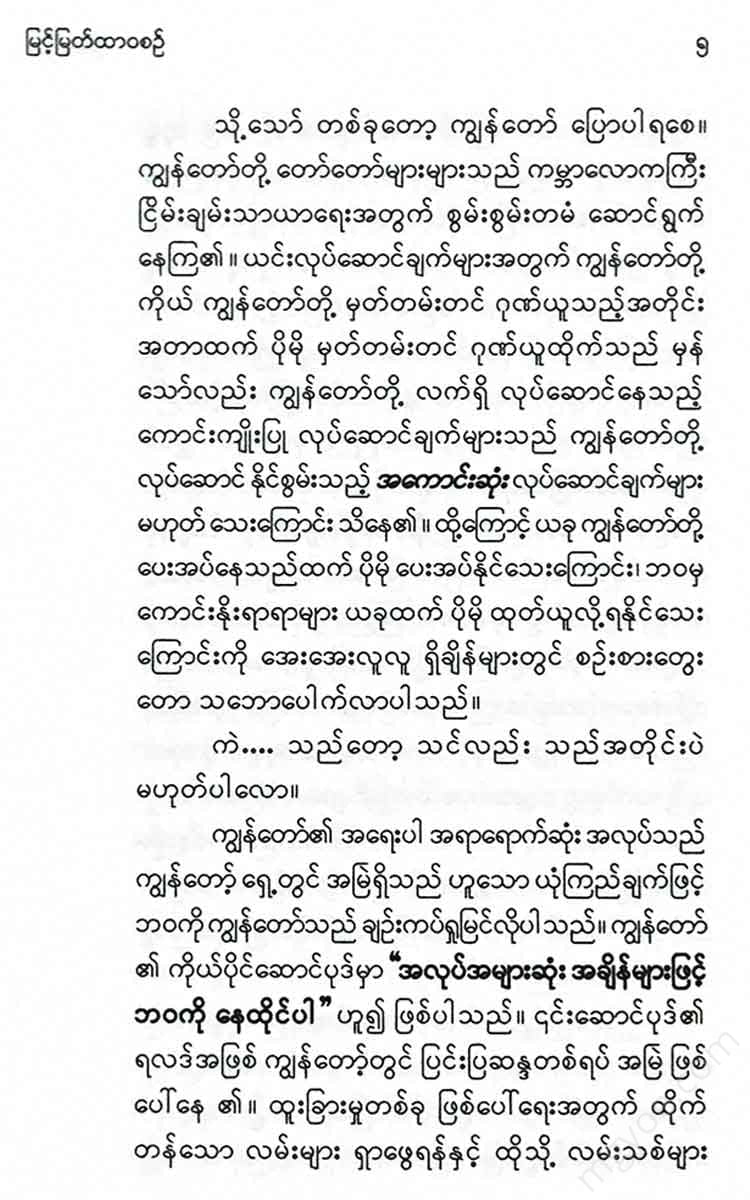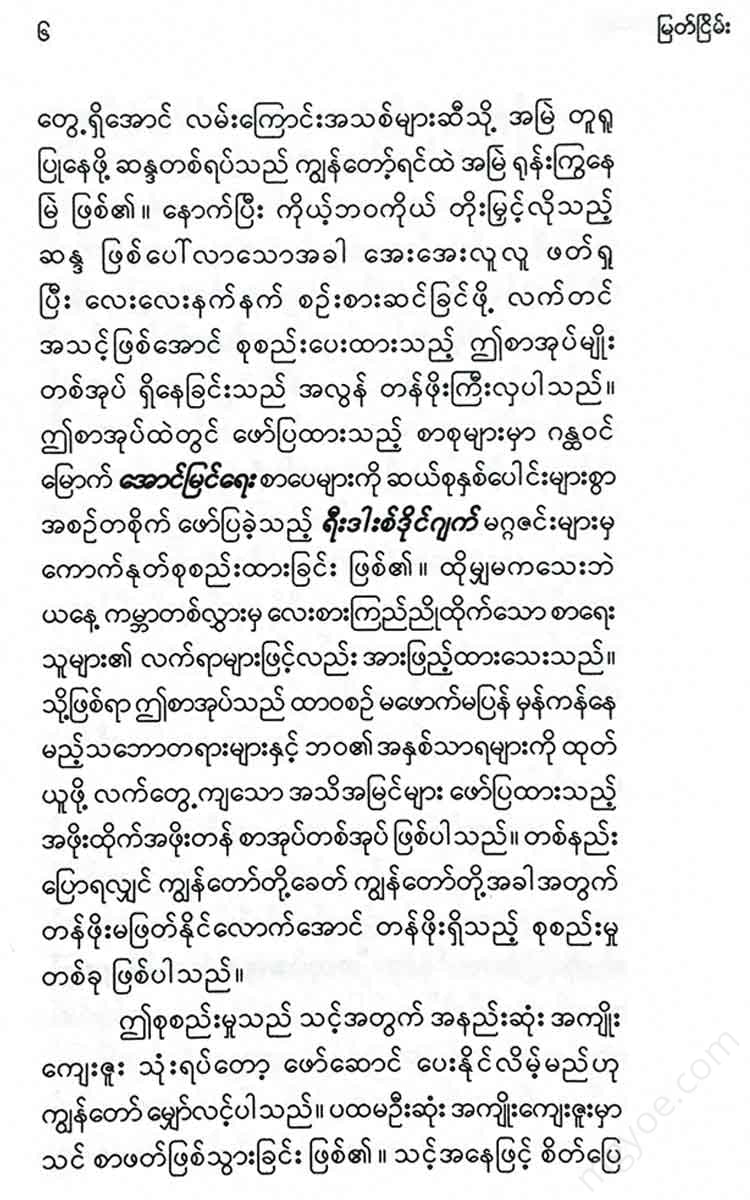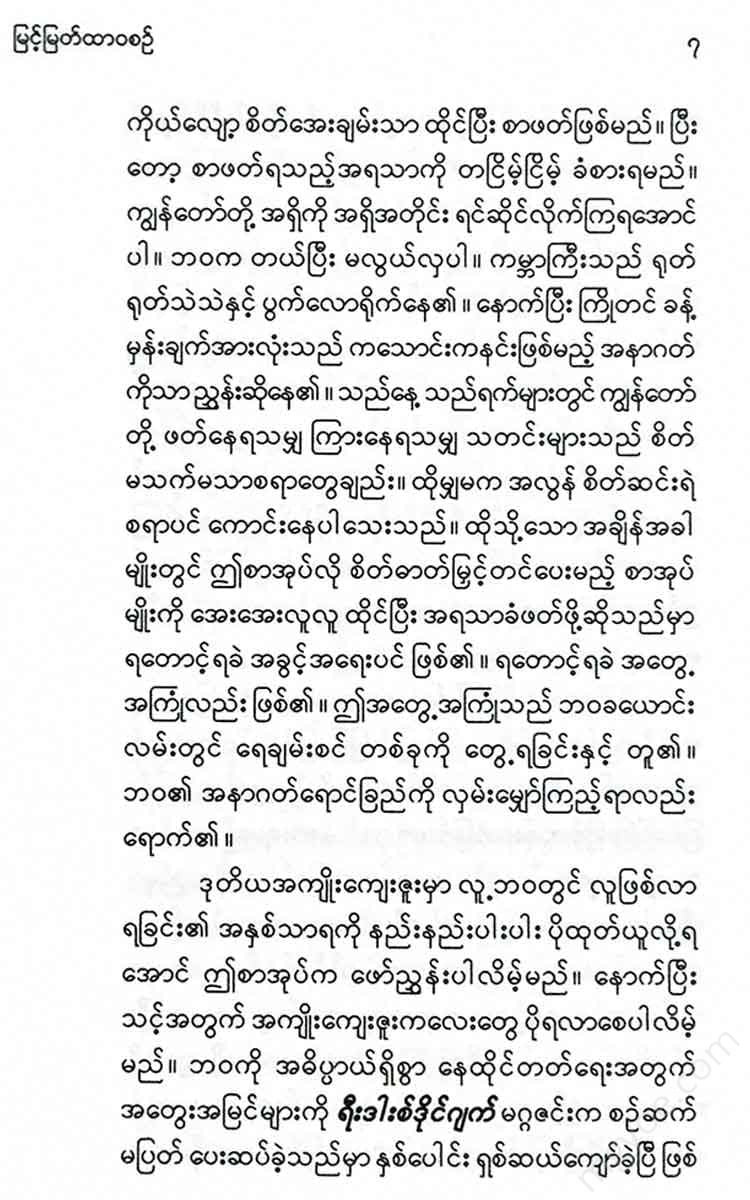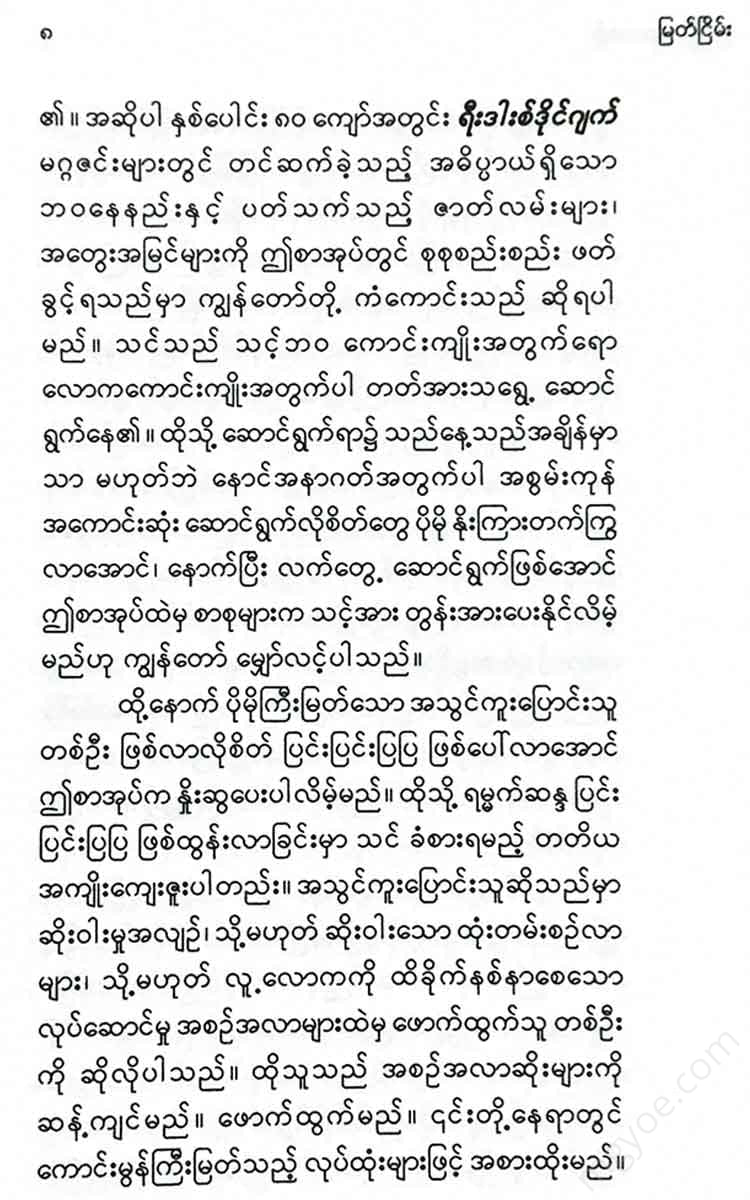စိတ်ကူးချိုချိုစာပေ
Myat Nyein - Myat Nyein is eternal.
Myat Nyein - Myat Nyein is eternal.
Couldn't load pickup availability
All people should strive to understand before they die what they are running away from, what they are running towards, and why they are running.
James Thurber
(James Thurber)
There are times in our daily lives when we are lost in thought. There are times when we reflect deeply on life. At such times, each of us has a desire to do something different, unique, or contribute to the world. This desire can be called a reason. Or it can be called a life mission. The main thing is to want to be part of a meaningful life.
However, it is not easy to regularly examine our worldly interests. Especially when we are surrounded by the many small things of life. However, it is important to have a clear understanding of what beliefs we will stand by in life and what goals we will strive to achieve.
The stories that will be told now are the stories of three people who show how they make choices when faced with life's challenges. When faced with a life of necessity, they highlight whether they accept fate as it is, or whether they persevere and create their own destiny.
The first story is about a young man named John Baker. A gifted athlete who aspires to be an Olympic athlete, he demonstrates through his actions what it means to live a meaningful life and make a difference in the world. As you read about him, you will see the choices he made and the goals he set for himself. Then you will think about what you should do with your life in the weeks, months, and years ahead. You will be able to make clear choices about how and where you will make a difference in the world.
The last race
William, Buchanan
( William J. Buchanan)
For 24-year-old John Baker, the future was bright. Full of hope. The time was the spring of 1969. He was a phenomenal runner, and sportswriters were calling him the fastest middle-distance runner in the world. The Olympics were coming up in 1972. John Baker dreamed of representing the United States in the middle-distance race.
Baker never expected to achieve such fame. His childhood was as ordinary as he was. He was a small boy and shorter than his teenage friends. He was considered by his peers to be “not tall enough” to be on the high school track team. But in his ninth grade year, something unexpected happened. And his life changed.
Manzano High School track coach Bill Wolferth has been trying to recruit John Harland, a tall, promising runner from his school. John Harland is also John Baker's best friend. Harland refuses. Then one day, John Baker asks, "Let me join the track team." "That's a good idea," Wolferth says. Their plan works. And so John Baker becomes a runner.
Energy surges
Their first race that year was a 1.7-mile cross-country race through the foothills of the Albuquerque Mountains. The focus of most observers was on Albuquerque’s cross-country champion, Lloyd Goff. As the starting gun went off, the runners lined up as expected. Goff was in the lead. Haaland was close behind. Four minutes after the start, the runners disappeared from view one by one. The course curved around the foothills of the mountains. The runners along the course disappeared one by one. A minute passed. Two minutes. Then they saw a lone runner emerging from the valley. Coach Wolffett elbowed one of his assistants and said, "Well, golf is out." Then he lifted the binoculars from his hand. "What a waste of money!" he shouted.
"That's not golf. That's baccarat."
Leaving a long line of stunned, gaping runners behind, Baker burst in. His time was 8:03:5. A new record.
What happened on the other side of the mountain? Baker explained later. He ran after the running champions until the halfway point of the race. In the meantime, he asked himself a question.
"I've run my best yet."
He didn't know, he didn't know. He stared at the back of the runner ahead of him. He didn't care about anything else, he didn't care. Right now, there was only one thing on his mind. To overtake the runner ahead, then overtake, then overtake the next one. Some reserve energy he didn't know he had was stirring in his body. "It's like being hypnotized," Baker replied. He passed the runners ahead of him one by one. He ignored the fatigue that was tearing at his muscles. He didn't think about it. He kept his stride steady. Until he finally crossed the finish line and collapsed, exhausted.
Did the results of the race change? As the seasons changed, Coach Wolferth would send Baker to compete in other races. The results were always the same. No other prize was tied for first place. Once on the track, the normally jovial and happy teenager became a relentless competitor. He became a runner with a mind and body that was unstoppable. Simply put, he had a mentality that no one could outrun him. By the end of his ninth grade year, Baker had broken six state records. By his tenth grade year, he was the best middle-distance runner the state had ever produced.
At that time, he was not even 18 years old.
The one who ruins expectations
In the fall of 1962, John Baker was accepted to the University of New Mexico in Albuquerque. He took his training to the next level. Every morning at dawn, he would run through the streets, parks, and golf courses of the city. He would run 25 miles a day. He would always carry a can of spray paint in his hand as he ran. As he ran through the streets, dogs would sometimes chase him. If he did, he would spray the dog with spray paint.
The training produced remarkable results. Soon, John Baker was the "expectations buster" at every race held in cities like Sausalito, Tulsa, and Salt Lake City, New Mexico. He was able to outrun the big names who were widely expected to win each race.
When John Baker was a college student, the University of Southern California was the team that every track team in the country feared. In the spring of 1965, the mighty California team was scheduled to play against Albuquerque. Sportswriters thought New Mexico was doomed. The University of Southern California team had three big names. Their names were:
